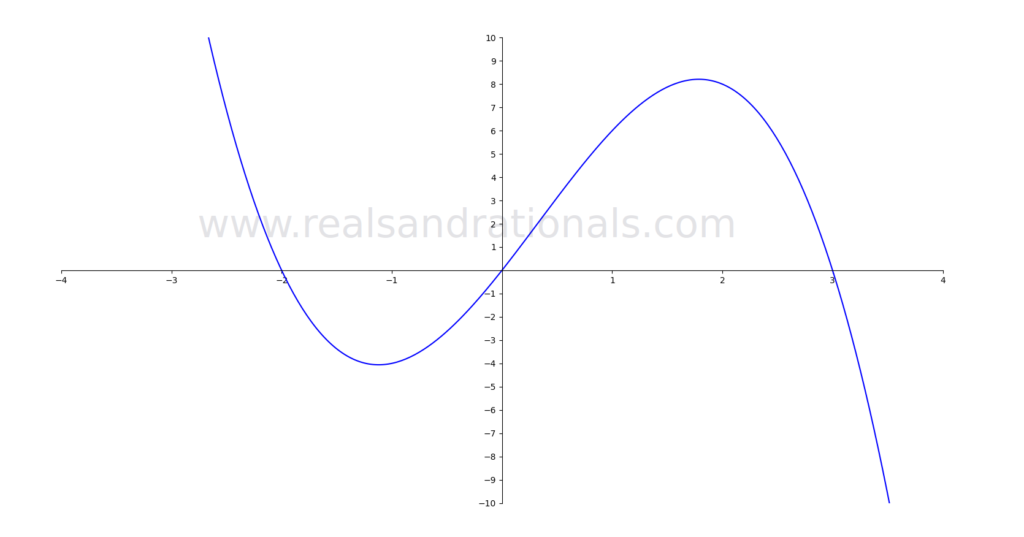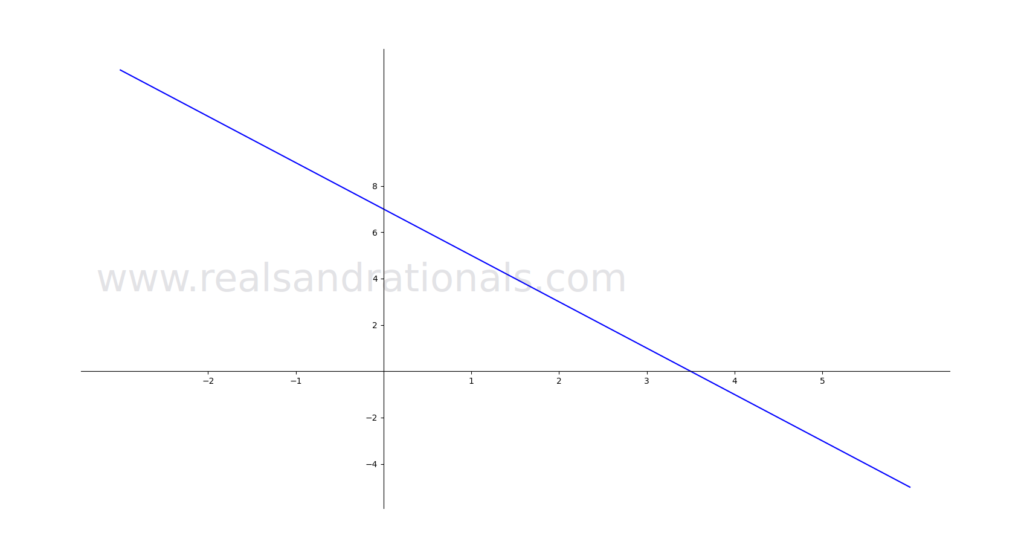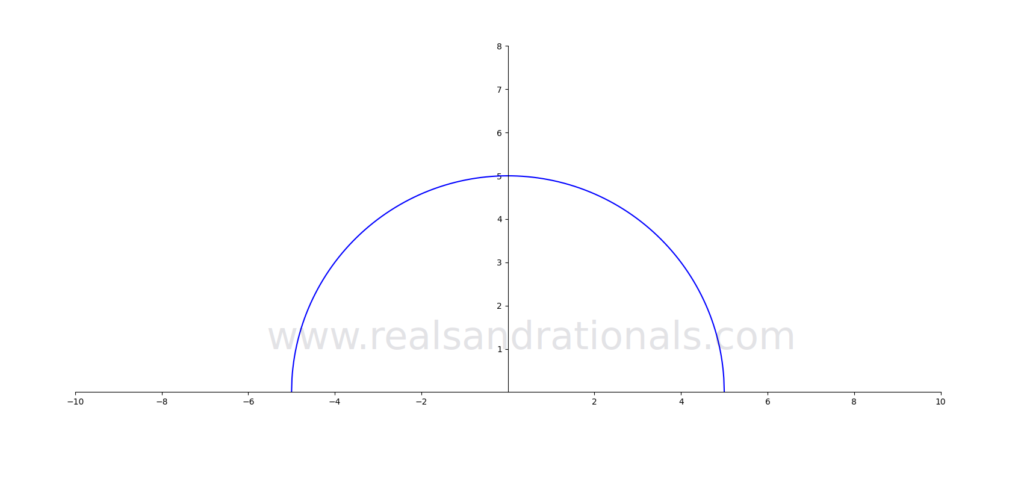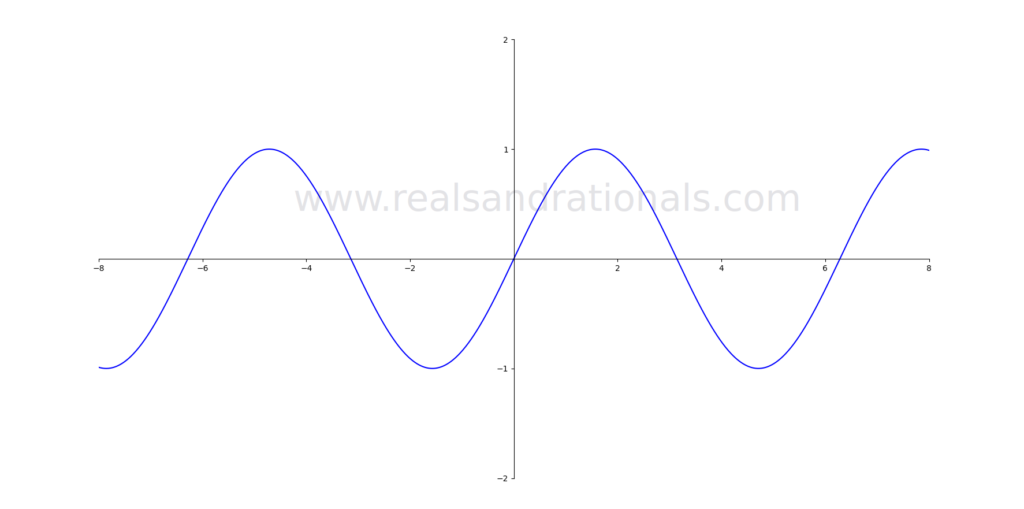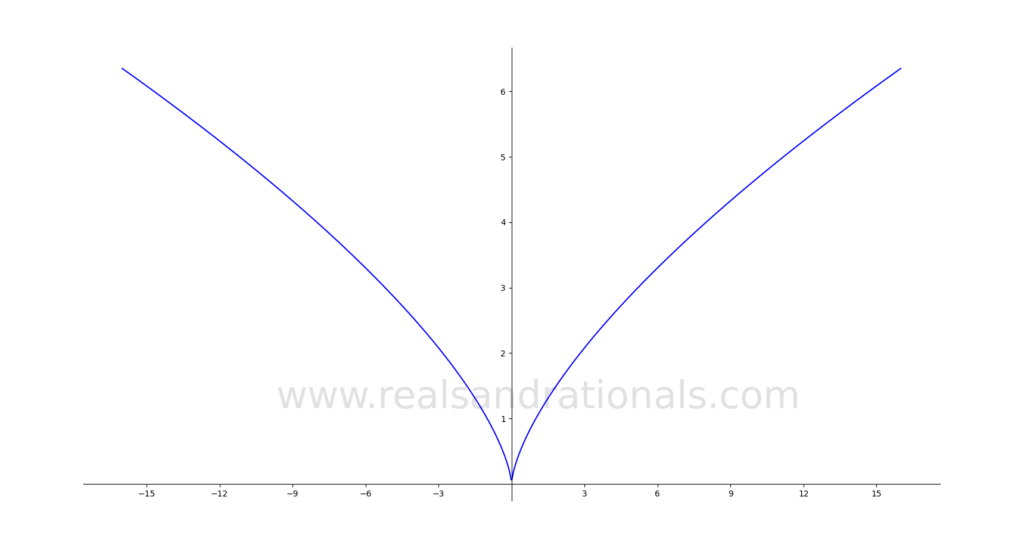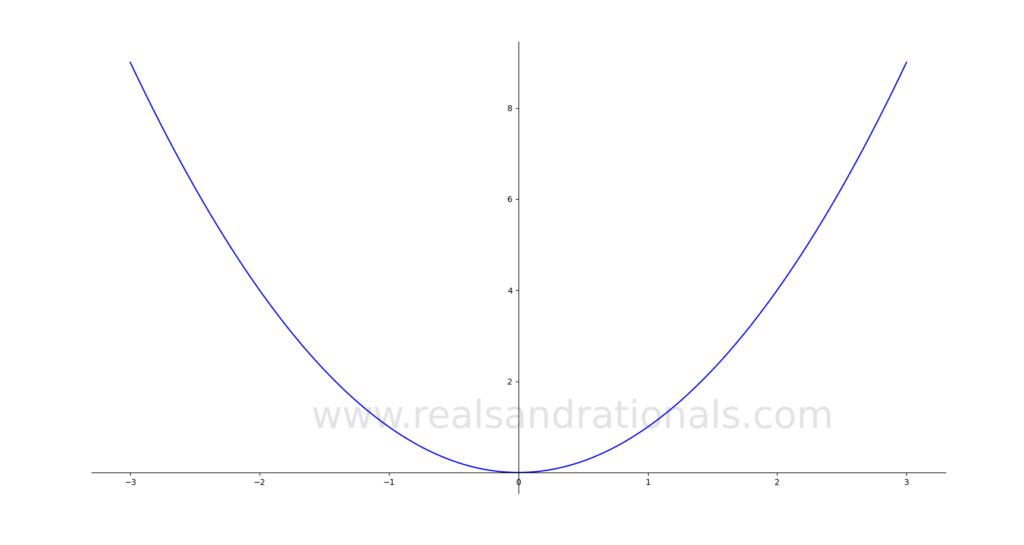Motivation
Say, we are asked to draw the graph of . How would we do this? We would like to find some example points that satisfy
. To do that, let us make a table and find some
pairs.
We plot example points for pairs from the table and since we assume the domain of the function to be
, we connect the example points to form a continuous curve.
All good so far.
Say, now we are asked to draw the graph of . We could of course follow the same method as we did for the previous example. But, don’t you think it is too much work to do? What if we are asked next to graph
or
?
What we can observe is that the functions and
seem to be closely related to the function
that we have already taken the trouble to draw. Can we somehow use the graph of
and just modify it slightly as required for the related graphs? That would not only be a lot quicker and less laborious, but also has less possibility of making errors.
So, how do we understand the relations between a known function such as and a new function such as
or
? And, how do we use this understanding to draw the graphs of the new functions?
This is the subject of the very important topic of function transformations.
Example transformations
Exercises
Problem set
In the following, assume is the parent function and
is the derived function. The derived function
is given in the function transformation way. Give the explicit expression way for
.
Problem set
In the following, assume is the parent function and
is the derived function. The derived function
is given in the explicit expression way. Give the function transformation way for
.
Shift in Y-direction
Exercises
Problem set
In each of the following problems, a function is assumed. A new function
is defined as a function transformation of
. And, the graph shown is the graph of
. Draw the graph of
.
Problem set
In each of the following problems, a parent function is given, and a derived function
is given in the function transformation way. Give the explicit expression way for
. Also, explain how the graph of
is related to the graph of
.
Problem set
In each of the following problems, explicit functions for and
are given. Express
in the function transformation way. Also, explain how the graph of
is related to the graph of
.
Reflection in Y-direction
Exercises
Problem set
In each of the following problems, a function is assumed. A new function
is defined as a function transformation of
. And, the graph shown is the graph of
. Draw the graph of
.
Problem set
In each of the following problems, a parent function is given, and a derived function
is given in the function transformation way. Give the explicit expression way for
. Also, explain how the graph of
is related to the graph of
.
Problem set
In each of the following problems, explicit functions for and
are given. Express
in the function transformation way. Also, explain how the graph of
is related to the graph of
.
Stretch in Y-direction
Exercises
Problem set
In each of the following problems, a function is assumed. A new function
is defined as a function transformation of
. And, the graph shown is the graph of
. Draw the graph of
.
Problem set
In each of the following problems, a parent function is given, and a derived function
is given in the function transformation way. Give the explicit expression way for
. Also, explain how the graph of
is related to the graph of
.
Problem set
In each of the following problems, explicit functions for and
are given. Express
in the function transformation way. Also, explain how the graph of
is related to the graph of
.
Shift in X-direction
Exercises
Problem set
In each of the following problems, a function is assumed. A new function
is defined as a function transformation of
. And, the graph shown is the graph of
. Draw the graph of
.
Problem set
In each of the following problems, a parent function is given, and a derived function
is given in the function transformation way. Give the explicit expression way for
. Also, explain how the graph of
is related to the graph of
.
Problem set
In each of the following problems, explicit functions for and
are given. Express
in the function transformation way. Also, explain how the graph of
is related to the graph of
.
Reflection in X-direction
Exercises
Problem set
In each of the following problems, a function is assumed. A new function
is defined as a function transformation of
. And, the graph shown is the graph of
. Draw the graph of
.
Problem set
In each of the following problems, a parent function is given, and a derived function
is given in the function transformation way. Give the explicit expression way for
. Also, explain how the graph of
is related to the graph of
.
Problem set
In each of the following problems, explicit functions for and
are given. Express
in the function transformation way. Also, explain how the graph of
is related to the graph of
.
Stretch in X-direction
Exercises
Problem set
In each of the following problems, a function is assumed. A new function
is defined as a function transformation of
. And, the graph shown is the graph of
. Draw the graph of
.
Problem set
In each of the following problems, a parent function is given, and a derived function
is given in the function transformation way. Give the explicit expression way for
. Also, explain how the graph of
is related to the graph of
.
Problem set
In each of the following problems, explicit functions for and
are given. Express
in the function transformation way. Also, explain how the graph of
is related to the graph of
.
Combinations
Exercises
Problem set
In each of the following problems, a function is assumed. A new function
is defined in terms of
. And, the graph shown is the graph of
. Form a sequence of intermediate derived functions (
), draw the graph of each intermediate derived function, and finally draw the graph of
.
Problem set
In each of the following problems, a function is assumed. A new function
is defined in terms of
. And, the graph shown is the graph of
. Draw the graph of
.
Problem set
For each of the following problems, give the explicit expression for .
Problem set
In each of the following problems, a parent function is given, and a derived function
is given in terms of the
. Give the explicit expression for
. Also, giving the sequence of intermediate functions(
) to transform
into
, explain how the graph of
is related to the graph of
.
Problem set
In each of the following problems, and
are defined. Express
is terms of
. Also, giving the sequence of intermediate functions(
) to transform
into
, explain how the graph of
is related to the graph of
.
Problem set
In each of the following problems, a parent function is given, and a derived function
is given as a function transformation of
. Give the explicit expression for
. Also, explain how the graph of
is related to the graph of
.
Problem set
In each of the following problems, explicit functions for and
are given. Express
as a function transformation of
. Also, explain how the graph of
is related to the graph of
.
Problem set
For each of the following problems, first plot . Then, using your knowledge of transformations (translation, reflection, scaling) plot
.
Problem set
For problems 1-5, first plot . Then, using your knowledge of transformations (translation, reflection, scaling) plot
.
- Use algebra to justify that the graph of
is same as graph of
shifted right by
. Hint:
- Use algebra to justify that the graph of
is same as graph of
shifted right by
and then reflected about
-axis.
Problem set
For each of the following problems, give the sequence of transformations (translation, reflection, scaling) needed to be done on function to obtain function
.
Problem set
In the following problems, from your knowledge on graphs of , plot
. (Assume appropriate domain for the functions, and assume
refers to the positive square root of
)
Problem set
For each of the following problems, give the sequence of transformations (translation, reflection, scaling) needed to be done on function to obtain function
. (Assume
refers to the positive square root of
)
Problem set
For each of the following problems, give the sequence of transformations (translation, reflection, scaling) needed to be done on function to obtain function
. (Assume
refers to the positive square root of
)
Problem set
In the following problems, from your knowledge on graphs of , plot
.
